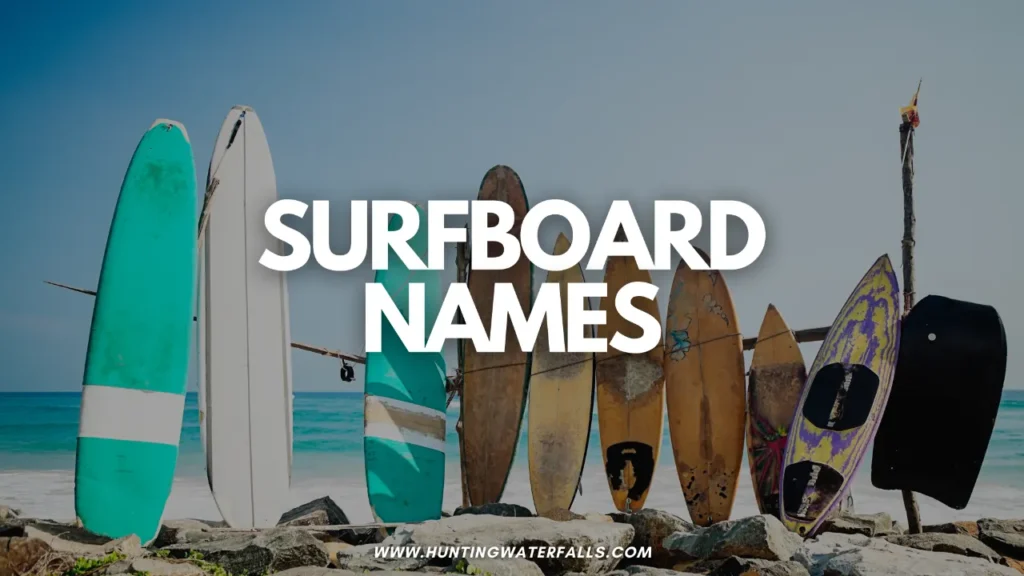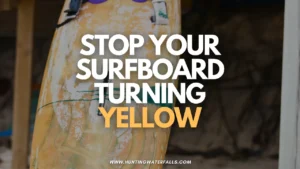Nothing beats the thrill of riding a wave on a beautiful sunny day with a good, well-waxed surfboard under your feet.
There are quite a few different surfboards out there. Each board has its own name, or several names in some cases, so it can be a bit confusing for non-surfers or new surfers as to which is which.
Especially if you're just getting into surfing or looking for a new board it can be overwhelming. However, board have names for a reason and each name describes something in particular about the board shape and/or size.
There’s difinitive no set of rules for naming a new kind of surfboard. The names have mostly to do with the size and shape of the board. Some surfboards got their names from the people who first designed them. Others developed from general surfer culture.
Knowing the different names of surfboards and what each board is best suited for will help you know which kind of board is best for you.
Longboard
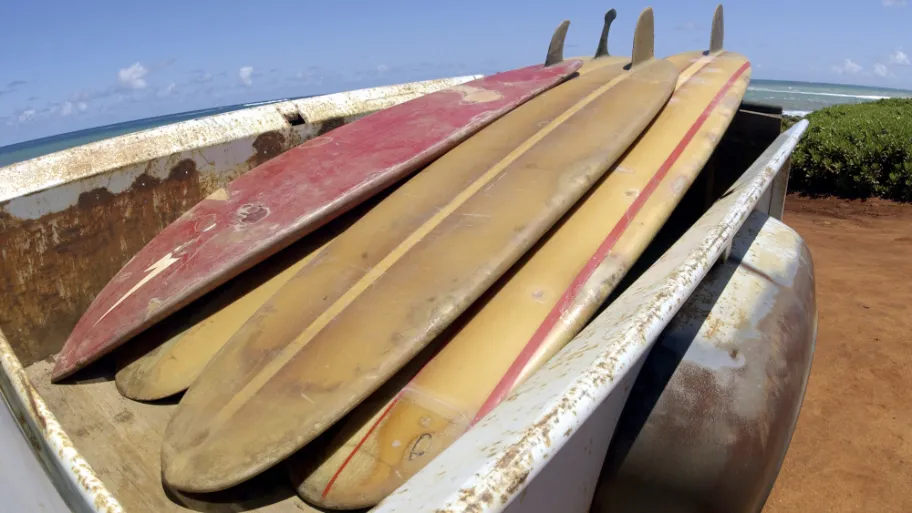
Longboards are one of the most well-known varieties of surfboard and the reason for their name is obvious.
They usually measure from 8’ to 10’ long and 22” to 25” wide.
This makes them the most stable kind of surfboard, so they are the go-to choice for people learning to surf.
They are also easier to paddle onto waves. So for the less fit or those in their twilights years of surfing and no longer as paddle fit as they once were these are popular choices.
Nose-Rider, Log
You’ll also come across a specific kind of longboard called a nose-rider or a log.
This board features a single fin and a wider nose area in front. This makes it easier for surfers to stand on the tip of the board and “hang ten.”
Malibu, Mal
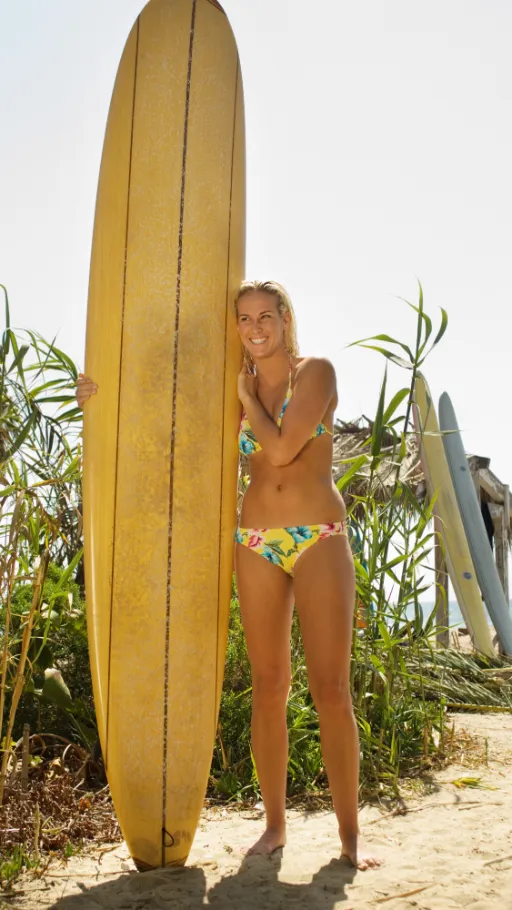
The Malibu (aka Mal) is another kind of longboard named for Malibu Beach in California where they were first used.
The terms malibu, mal and long board are mostly used interchangeably to talk about the longest types of surfboards.
Malibus also have rounder noses and tails, which increases the stability of the board.
Mini-Mal, Midlength
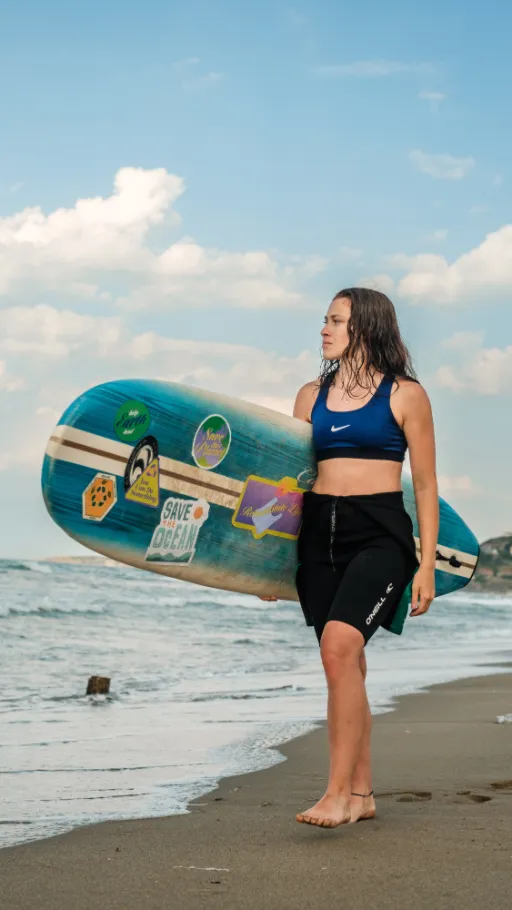
The mini-mal (sometimes but rarely “minimal” or “midlength board”) is a slightly smaller (most often 7’ to 8’), boxier variety of Malibu.
Malibus were a little too large and heavy for some surfers, so surfboard shapers (makers of surfboards) responded by reducing the dimensions while retaining the shape.
Mini-mals are common among newer surfers as they are easier to paddle onto waves but less cumbersome that a full length mal and are easier to turn once you're on the wave. They also tend to be popular among female surfers for their cruisy and casual fun style.
Shortboard, Thruster, High-Performance Board
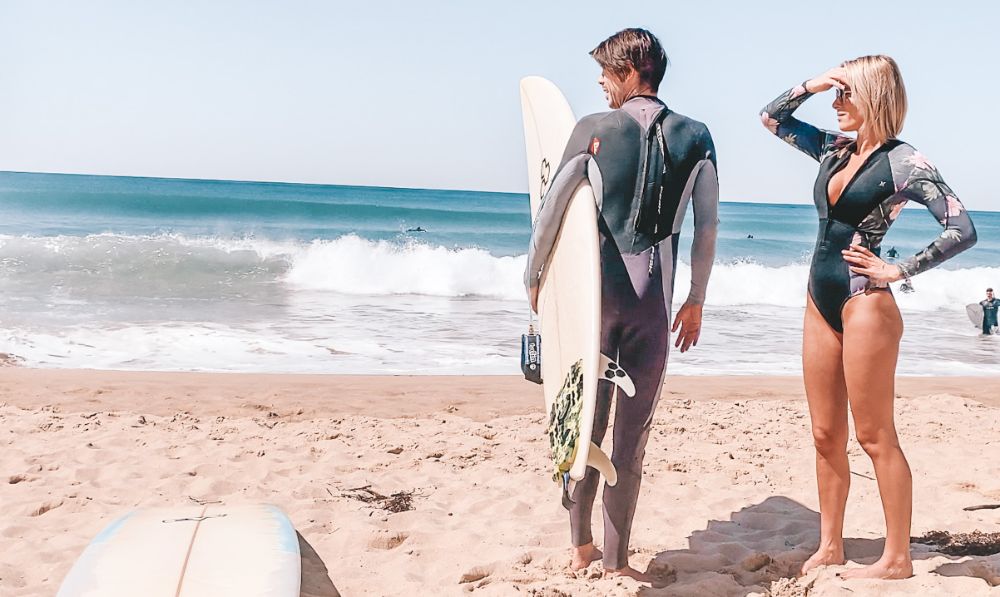
Shortboards are shorter than the “standard” longboard. They usually measure between 5’6” and 6’4” long and 16’’ to 19” wide. The shortboard’s shape features a pointed nose and rounded-square tail. They also have between 3 to 5 fins.
A 3-fin set up on a surfboard is also known as a “thruster” set up. It’s most common on shortboards, but not exclusive to them.
These boards are also called “high-performance boards” because of their frequent use by professional surfers. Generally the smaller the board the higher performance it's going to be as turning becomes sharper once on waves but paddling becomes harder.
Twin Fin
Twin Fin usually refers to an older style of board that (as the name suggests) has 2 fins, one on each side. However, there are some newer high performance boards made in this style.
Twin fins usually, but not always, have a swallow tail.
Fish
The fish board gets its name from the forked fish-tail shape of the board’s tail. The fish is a shorter, wider variation of the standard shortboard. It usually measures between 5’2” and 6’4” with a width of 18” to 22” inches.
The nose is also rounder and wider than that of the standard shortboard and the board itself is generally wider and something thicker. formy buoyancy.
Fish boards usually have either two or four fins for stability.
Groveller
A groveller is basically a shorter, wider version of a shortboard. This stumpier design makes them better suited for small waves.
Grom, Youth’s
A grom is a name for a shortboard scaled down to be easier to use for younger surfers.
It is usually 6’ or shorter and specifically designed for youth surfers who have lighter body weights and smaller size than adults.
Gun, Semi-Gun
The gun board gets its name from elephant guns. Elephant guns were used to take down the largest of creatures on land, and these boards were designed to tackle the largest waves on the sea.
The gun measures between 7’ and 12’, but averages around 9’. It’s always narrower than a longboard and has one fin. The semi-gun is a shorter variety of gun board
Tow-In
The Tow-In surfboard is a cousin to the gun and is meant for the same purpose: tackling the biggest waves.
It’s much shorter, though, usually measuring between 6’ and 6’6”. The name comes from the trend of towing in a surfboard with a jet ski that developed in the early 1990s.
Mini-Simmons
A mini-Simmons board is a shorter version of the longboard designed by legendary surfer Bob Simmons.
These boards are short and wide (4’10” to 5’ 10” long by 20” to 22.5” wide) and feature a two-fin design for increased speed.
They are best suited for darting through smaller waves.
Bonzer
A bonzer is similar to a shortboard, but longer. It was designed to organize the water flow beneath the board as efficiently as possible.
Bonzers are built for speed and the thrill of riding one of these high-speed boards led to its name “bonzer,” an Australian slang roughly meaning excellent or first-rate.
Hydro-Foil, Foil
The foil replaces fins with a hydrofoil.
This causes the board to rise above the water, offering increased speed.
Boogie Board, Bodyboard, Beater
All of these terms refer to the same short, rectangular board.
The boogie board was designed for lying on instead of standing on.
Surf enthusiast Tom Morey designed this board while living in Hawaii in the 1970s and named it for the “boogie-woogie” band music popular in the 1930s and 1940s.
The term “Beater” comes from the board’s “ability” to defy local restrictions on watercraft that included stand-up surfboards.
Alaia, Finless
The Alaia board is a throwback to the original boards used by the Polynesians.
The Alaia is long, thin, and square-tailed with no fins. Other boards may also omit fins while using more modern shapes.
The lack of fins reduces the amount of control dramatically, so these boards are used more by advanced surfers.
SUP Board
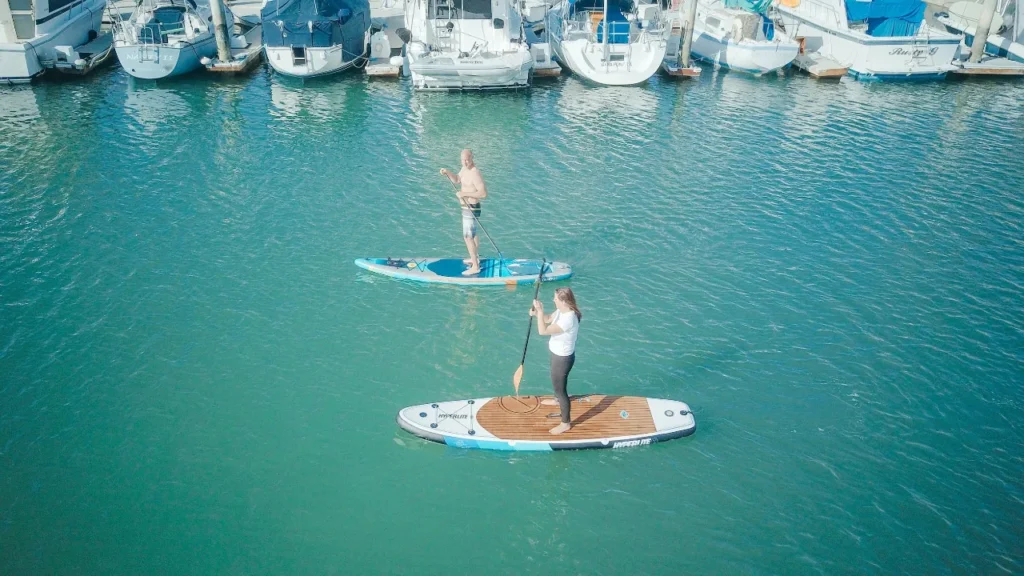
The Stand-Up-Paddleboard is a sort of cousin to surfboards.
It has a much larger volume and is generally used more for paddling along calmer waters than catching waves.
However, stand up paddleboarders do catch waves and can sometimes be hated by other surfers because they can catch waves from so far out the back abusing the surfer etiquette system where whoever gets on the wave first has right of wave.
Funboard, Egg, Mini-Log, Evolution
Funboard is more a blanket term. It encompasses nearly any board between a shortboard and a longboard.
The name comes from the happy medium between the ease and stability of a longboard and the speed and maneuvarability of a shortboard.
There are a few specific varieties of funboard. The egg is an oval-shaped funboard, but may also feature a round nose and square tail.
A mini-log is a smaller version of a log or nose-rider board.
Evolution boards are more professional-oriented funboards and are a middle ground between mini-mals and shortboards.
Hybrid, All-Rounder
A hybrid board is another general term.
It refers to the combination of the features of different boards.
An all-rounder is a common kind of hybrid designed to be work well in the average range of surf conditions.
Retro
Retro is another general name for any board resembling those used in the early days of surfing. As such, they will usually resemble longboards or malibus.
Step-Up and Step-Down Boards
These terms are more descriptions than specific kinds of boards. They refer to the kind of board needed in a given situation.
If the waves get bigger, a surfer may need to “step up” his or her board choice accordingly.
If the waves get less challenging, a surfer will “step down” to something more suited to mellower conditions.
Foamie, Foamboard, Softboard, Soft-Top
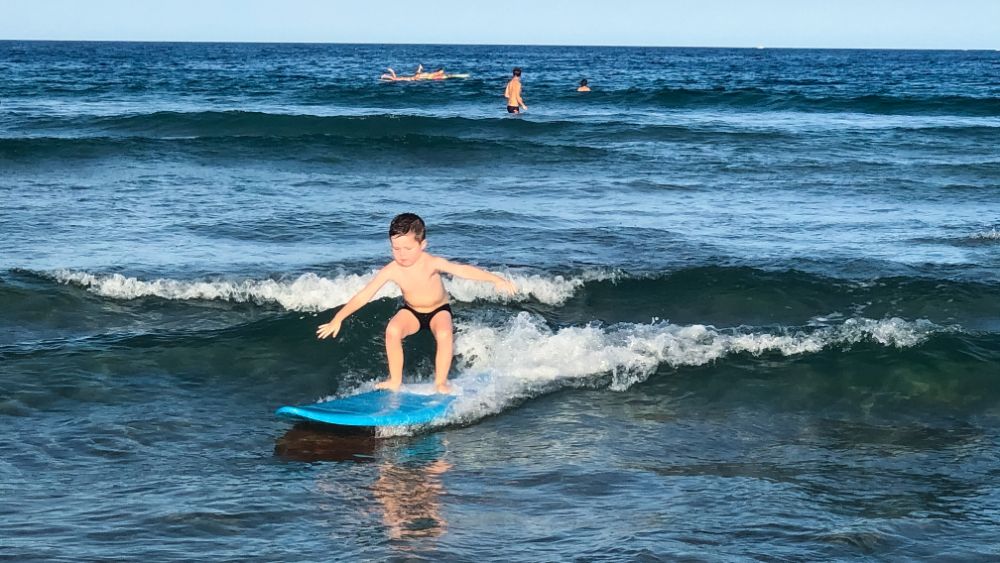
A foamie or foamboard gets its name from the polyurethane material it’s made of. Foam is the lightest and most buoyant of all materials surfboards are made from, so they are best suited for beginners.
Foamboards come in all lengths and sizes but tend to fit into the longboard category, which is the most stable of boards.
They are great for kids and beginners but can even be a lot of fun for experiences surfers, especially on days where the conditions are smaller.
Asymmetrical
Asymmetrical boards are another general category with no exact criteria, except, in this case, that the board is not symmetrical.
These are the most niche of all surfboards, being built for specific people with specific purposes in mind.
Skimboard
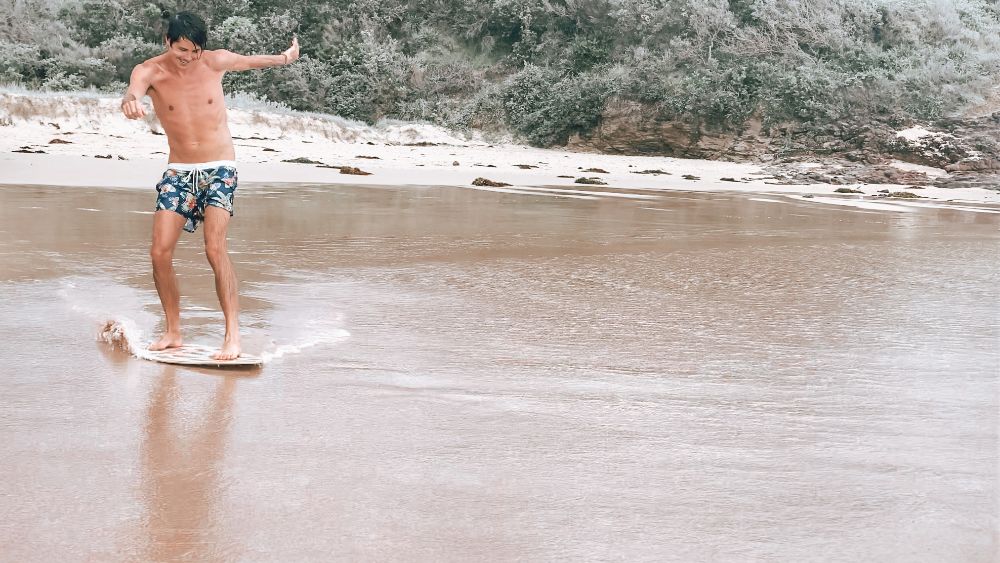
Whilst not technically a “surfboard” the skimboard is another type of craft used to catch waves.
You don't really surf on a skimboard but rather you run at the water from the shore. and skim into shoredump waves and get very short rides.
They are much smaller than surfboards and have no fins.
I'm Sure There Are Some I Missed But This Covers Most Surfboard Names
These are the most common kinds of boards you will encounter in the world of surfing.
Sometimes people use some of these terms interchangeably, but the above is a great starting point for delving into the world of surfboards.

